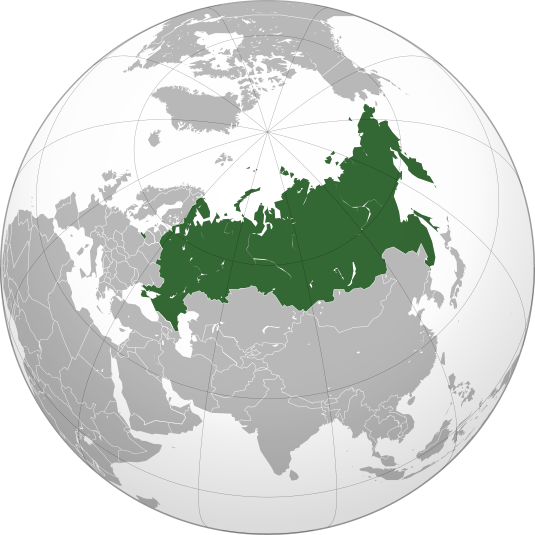More languages
More actions
mNo edit summary Tag: Visual edit |
m (Removed categorization as stump.) Tag: Visual edit |
||
| Line 52: | Line 52: | ||
[[Category:Countries]] | [[Category:Countries]] | ||
[[Category:Outline needs additional content]] | [[Category:Outline needs additional content]] | ||
<references /> | <references /> | ||
Revision as of 01:44, 19 November 2022
| Russian Federation Российская Федерация | |
|---|---|
 | |
| Capital and largest city | Moscow |
| Dominant mode of production | Capitalism |
| Government | Federal semi-presidential republic |
• President | Vladimir Putin |
• Prime minister | Mikhail Mishustin |
| History | |
• Proclamation of the Russian Empire | 2 November 1721 |
| 30 December 1922 | |
• Establishment of the Russian Federation | 12 December 1991 |
| Population | |
• 2021 estimate | 146,171,015 |
The Russian Federation is a bourgeois republic established in 12 December, 1991, during the counter-revolution in the Soviet Union.
History
The Russian SFSR declared sovereignty on December 12, 1991[1], even though 73% of the population had voted to remain in the Soviet Union earlier that year.[2] On December 25, Gorbachev resigned and the Soviet Union was dissolved the next day.[3]
Economy
After the fall of the Soviet Union, the Russian economy was in deep turmoil, during which time it was exploited by Western imperialist parasites.[4]
Vladimir Putin's presidency marked a turning point in the Russian economy, his ascension was preceded by an academic paper he wrote where he proposed that Russia use its vast natural resources to restructure and revitalize the economy around major state-owned enterprises.[5] It was only after Russia again asserted its economic independence that it became demonized by Western bourgeois media yet again, in a fashion reminiscent of Cold War histrionics.
In 2022, US sanctions against Russia backfired against the US, resulting in immense gains for the Russian state-owned oil and gas sector.[6]
Less than a quarter of the Russian population supports capitalism and 62% prefer a centrally planned socialist economy.[7]
Politics
The ruling party of the Russian Federation is the nationalist party United Russia, which has the majority of seats in the parliament. Vladimir Putin was formerly a member of the party but is now an independent.[8] Other major parties are the Communist Party of the Russian Federation, the social democratic party A Just Russia – For Truth, and the far-right Liberal Democratic Party.
18% of Russians prefer the current political system and only 16% support a Western-style liberal democracy. Almost half (49%) prefer the Soviet system with a vanguard party, including 62% of Russians aged 55 or older.[7]
Infrastructure
Demographics
Culture
See also
References
- ↑ "Постановление Верховного Совета РСФСР от 12.12.1991 № 2015-I" (1991-12-12). Сейчас.ру.
- ↑ "Sowjetunion, 17. März 1991 : Weiterbestand der UdSSR als Föderation gleichberechtigter und souveräner Staaten" (2020-10-07). Database and Search Engine for Direct Democracy. Retrieved 2021-12-29.
- ↑ Zbigniew K. Brzezinski (1997). Russia and the Commonwealth of Independent States: Documents, Data, and Analysis (p. 50). [PDF] London: Center for Strategic and International Studies. ISBN 1563246376
- ↑ Darya Sinusoid (2021-08-25). "Russia’s Shock Therapy: Neoliberalizing Russia"
- ↑ "What did Putin bring to the Russian economy after 20 years in office?".
- ↑ Richard Medhurst (2022-06-15). "Russian Oil Revenue SOARS After Sanctions" Richard Medhurst.
- ↑ 7.0 7.1 "What Do Russians Think Russia Should Be Like?" (2021-10-05). Levada-Center. Archived from the original on 2022-04-28. Retrieved 2022-08-01.
- ↑ "Vladimir Putin quits as head of Russia's ruling party" (2012-04-24). The Telegraph.


